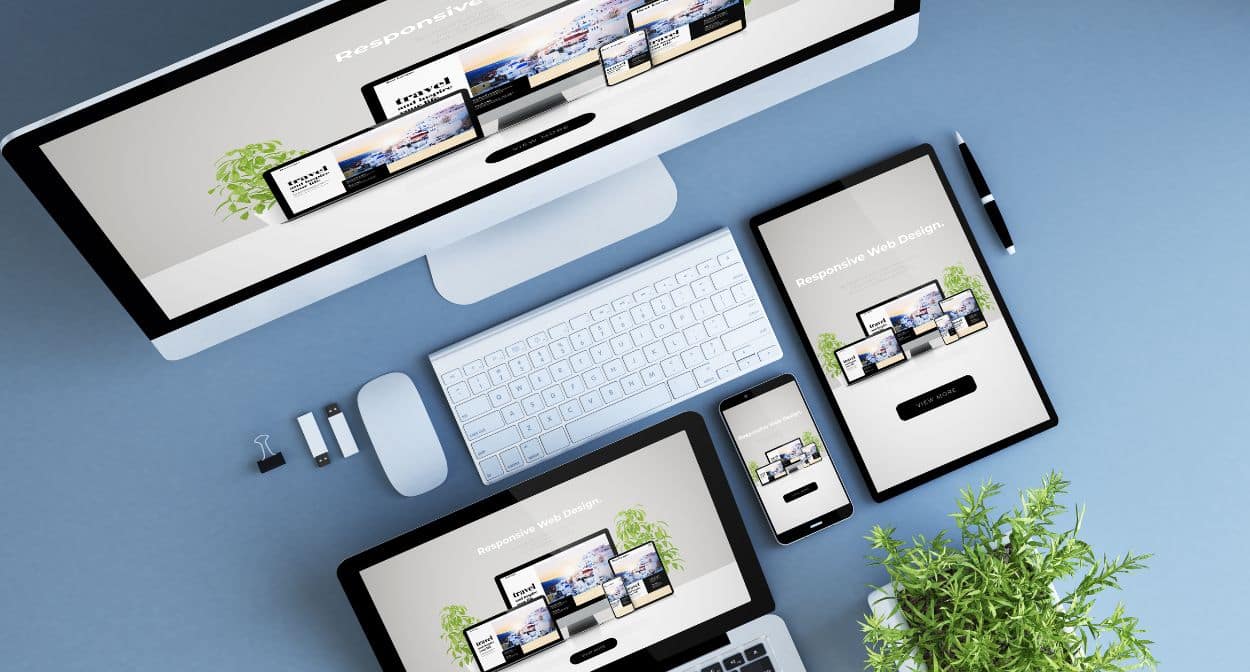1. Compelling Headline
A compelling headline is the cornerstone of any successful landing page, article, or marketing campaign. It’s the first thing your audience sees, and it has the power to make or break their interest in what you have to offer. In a world saturated with content, capturing attention quickly is essential, and that’s exactly what a compelling headline does. It grabs the reader’s attention, communicates value, and encourages them to take the next step—whether that’s reading further, clicking a link, or making a purchase.
Why a Compelling Headline Matters
The headline is often the first and sometimes the only chance you have to make an impression. Research shows that 8 out of 10 people will read the headline, but only 2 out of 10 will go on to read the rest of the content. This makes the headline the most critical element in your content strategy.
A compelling headline does more than just attract attention; it sets the tone for the entire piece. It tells the reader what they can expect and why they should care. In a digital environment where attention spans are short, a headline needs to convey its message quickly and effectively. If your headline fails to resonate, you risk losing potential customers before they even engage with your content.
2. Effective Use of Visuals

Why Visuals Matter
Visuals play a pivotal role in communication. The human brain processes images 60,000 times faster than text, and people remember 80% of what they see compared to just 20% of what they read. In a world where attention spans are shrinking, visuals can make your content more accessible, memorable, and shareable. They help break up large chunks of text, making content easier to digest, and can evoke emotions that words alone might not convey.
For businesses, the strategic use of visuals can lead to higher engagement rates, increased time on site, and better conversion rates. Whether you’re aiming to educate, inspire, or persuade, incorporating the right visuals can make your content more compelling and effective.
3. Clear Call-to-Action (CTA)
A clear call-to-action (CTA) is the driving force behind successful conversions on any landing page, email, or marketing campaign. It’s the pivotal element that guides visitors towards taking a specific, desired action, whether it’s signing up for a newsletter, downloading a resource, or making a purchase. A well-crafted CTA not only motivates but also directs users toward the next step in their customer journey, making it a critical component of any effective marketing strategy.
The Importance of a Clear CTA
The primary goal of any marketing effort is to convert visitors into leads, and leads into customers. A clear CTA plays an essential role in achieving this goal. It removes ambiguity by explicitly telling the user what to do next, reducing friction and decision fatigue. In a digital landscape filled with distractions, a strong, clear CTA ensures that the path to conversion is straightforward and compelling.
A CTA is more than just a button or a link—it’s a strategic element that combines design, language, and placement to influence user behavior. Without a clear and persuasive CTA, even the most beautifully designed landing page or the most engaging content can fall flat.
4. Minimalist Design

Minimalist design is more than just a trend—it’s a powerful approach to creating websites, landing pages, and digital experiences that are clean, focused, and effective. In a world where users are bombarded with information, minimalist design cuts through the noise by emphasizing simplicity, clarity, and functionality. This approach can lead to higher engagement, better user experiences, and ultimately, increased conversions.
What is Minimalist Design?
Minimalist design is characterized by the use of minimal elements to create a clean and uncluttered aesthetic. It focuses on stripping away unnecessary features, reducing visual clutter, and emphasizing the essential aspects of a design. The goal is to create a user interface that is straightforward, intuitive, and visually appealing, allowing users to focus on the content and actions that matter most.
The key principles of minimalist design include:
- Simplicity: Every element serves a purpose, and anything that doesn’t contribute to the design’s goal is removed.
- Clarity: The design is easy to understand and navigate, with a clear hierarchy and intuitive layout.
- Functionality: The design is not only aesthetically pleasing but also highly functional, supporting user needs without distraction.
- Whitespace: The use of ample whitespace, or negative space, helps to separate elements and create a sense of openness and balance.
5. Strong Value Proposition
A strong value proposition is the foundation of any successful business, marketing strategy, or product offering. It’s the concise, compelling statement that communicates the unique value your product or service brings to your customers. More than just a slogan or tagline, a value proposition addresses the essential question: Why should a customer choose your product over a competitor’s? When crafted effectively, a value proposition becomes a powerful tool that differentiates your brand, resonates with your target audience, and drives conversions.
What is a Value Proposition?
A value proposition is a clear, specific statement that articulates the benefits a customer can expect from your product or service. It defines what makes your offering unique and why it is better suited to meet the needs of your target market compared to alternatives. The value proposition answers three critical questions:
- What do you offer?
- How does it solve the customer’s problem or fulfill their need?
- Why should they choose you over the competition?
The best value propositions are customer-focused, highlighting the key benefits and outcomes customers can achieve by choosing your product or service.
6. Trust Signals and Social Proof

What Are Trust Signals?
Trust signals are visual or textual cues that reassure visitors of the legitimacy, reliability, and security of a website or brand. These signals reduce the perceived risk of engaging with a business, especially when it comes to making a purchase or sharing personal information.
What Is Social Proof?
Social proof is the psychological phenomenon where people look to the actions and opinions of others to determine their own behavior. When potential customers see that others have had a positive experience with your brand, they are more likely to trust and engage with you.
7. Mobile Optimization
Mobile optimization is no longer just an option; it’s a necessity. With the majority of internet users accessing websites through their mobile devices, ensuring that your landing pages and overall site are fully optimized for mobile is crucial to maximizing conversions and providing a seamless user experience. Here’s why mobile optimization matters and how you can effectively implement it.
Why Mobile Optimization Matters
Increased Mobile Traffic: As mobile devices have overtaken desktops in internet usage, more of your potential customers are likely browsing and making purchases on their smartphones. A poorly optimized mobile experience can lead to high bounce rates and missed opportunities.
SEO Benefits: Search engines like Google prioritize mobile-friendly websites in their rankings. Sites that are not optimized for mobile may suffer in search visibility, which can reduce traffic and, consequently, conversions.
Enhanced User Experience: A smooth, responsive mobile experience keeps users engaged and reduces friction. If users have to pinch, zoom, or scroll excessively, they’re more likely to abandon your page, costing you valuable leads or sales.
Faster Load Times: Mobile users expect quick load times. Slow-loading pages can frustrate users and lead to higher bounce rates. Optimizing for mobile ensures that your pages load quickly, retaining user interest and improving the likelihood of conversion.
8. Fast Loading Speed

Why Fast Loading Speed Matters
User Experience: Visitors expect a seamless experience. If your landing page takes more than a few seconds to load, users may abandon it in favor of a competitor’s site. A fast-loading page keeps users engaged and encourages them to explore further.
SEO Ranking: Google considers page speed as a ranking factor. Faster pages are more likely to rank higher in search engine results, driving more organic traffic to your site. Slow pages, on the other hand, may be penalized, reducing visibility.
Conversion Rates: Research shows that even a one-second delay in page load time can result in a significant drop in conversions. By optimizing for speed, you can improve conversion rates and boost your return on investment (ROI).
9. User-Friendly Forms

User-friendly forms are a critical element of any high-converting landing page. These forms are the gateway between potential customers and the action you want them to take, whether it’s signing up for a newsletter, downloading a resource, or completing a purchase. When designed well, they not only reduce friction but also enhance the overall user experience, leading to higher conversion rates. Here’s how to create forms that users will appreciate and engage with:
1. Keep It Short and Simple
- Minimize Fields: Ask only for the essential information you need. Every additional field can decrease form completion rates. If you don’t need a phone number or mailing address, don’t ask for it.
- Single-Column Layout: A single-column layout is easier to follow and feels less overwhelming than multi-column designs.
2. Use Clear and Concise Labels
- Descriptive Labels: Each field should have a clear label that describes what information is required. Use plain language and avoid jargon.
- Inline Validation: Provide immediate feedback as users fill out the form. For example, if an email address is formatted incorrectly, let the user know right away.
3. Group Related Fields Together
- Logical Grouping: If your form requires multiple steps or a variety of information, group related fields together. For example, keep personal details separate from payment information.
- Use Sections Wisely: Break long forms into sections or steps. This approach makes the form feel more manageable and guides users through the process step by step.
4. Offer Clear Instructions and Assistance
- Tooltips and Help Text: Provide additional guidance using tooltips or help text that explains what’s needed without cluttering the form. This is especially useful for complex or unfamiliar fields.
- Progress Indicators: For multi-step forms, show a progress indicator. This helps users know how far they’ve come and how much is left, reducing abandonment rates.
5. Make the Form Visually Appealing
- Use White Space: Don’t overcrowd your form. Adequate white space helps each field stand out and makes the form easier to scan and complete.
- Consistent Styling: Ensure that fonts, colors, and button styles are consistent with your overall brand design. A cohesive look enhances trust and professionalism.
6. Optimize for Mobile Devices
- Responsive Design: Your forms must work seamlessly on all devices. Use large, tappable buttons and ensure that text fields are easy to fill out on smaller screens.
- Auto-Fill and Suggestions: Enable features like auto-fill and mobile-specific keyboards (e.g., numeric keypad for phone numbers) to make the process faster and smoother for mobile users.
7. Ensure Accessibility
- Screen Reader Compatibility: Design your forms to be accessible to all users, including those using screen readers. Proper labeling of fields and buttons is essential.
- Keyboard Navigation: Make sure your forms can be completed using only a keyboard, providing an inclusive experience for users with disabilities.
8. Create a Clear and Compelling CTA
- Action-Oriented Buttons: Your call-to-action (CTA) should be prominently displayed and use action-oriented language (e.g., “Get Your Free Guide” instead of “Submit”).
- Visual Contrast: Use a button color that stands out from the rest of the form, making it easy to identify and click.
9. Build Trust with Security Features
- Privacy Assurance: Include a brief statement near the form assuring users that their information will be kept private and secure. For sensitive data, display security badges or encryption icons.
10. Test and Optimize Continuously
- A/B Testing: Regularly test different form designs, lengths, and CTAs to see what resonates best with your audience. Small changes can have a significant impact on conversion rates.
- Analyze Form Abandonment: Use analytics to track where users drop off in the form completion process. This insight helps you identify and fix problem areas.
10. Consistent Branding

Consistent branding is crucial for creating a cohesive and recognizable identity for your business. It ensures that every touchpoint—whether it’s a website, social media, email, or physical product—reflects the same visual and messaging elements. This consistency helps build trust, reinforces your brand’s message, and creates a memorable experience for your audience.
Key Elements of Consistent Branding
Visual Identity
- Logo: Your logo is the cornerstone of your brand’s visual identity. It should be used consistently across all platforms and materials, with the correct colors, sizes, and placements.
- Color Palette: Stick to a specific set of colors that represent your brand. Consistent use of these colors across all marketing materials helps create a unified look and feel.
- Typography: Use the same fonts and text styles across all platforms. Consistent typography helps reinforce your brand’s personality and makes your communications instantly recognizable.
- Imagery: Ensure that any images or graphics used align with your brand’s visual style. Whether you’re using photographs, illustrations, or icons, they should all fit within your established visual identity.
Messaging
- Voice and Tone: Develop a consistent brand voice and tone that reflects your brand’s personality. Whether your tone is professional, casual, or playful, it should remain uniform across all content.
- Tagline and Key Messages: Consistently use your brand’s tagline and key messages in your communications. This helps reinforce what your brand stands for and what you offer.
Customer Experience
- Website and Digital Presence: Your website should reflect your brand’s visual and messaging consistency. This includes consistent use of colors, fonts, and imagery, as well as a uniform tone in written content.
- Social Media: Maintain consistency in your social media profiles, including profile pictures, cover photos, and post styles. This helps create a cohesive brand presence online.
- Customer Service: Ensure that your customer service interactions align with your brand’s voice and values. Consistent service reinforces trust and reliability.
Conclusion
A high-converting landing page is one that seamlessly blends persuasive content with an intuitive design. By focusing on these 10 essential design elements—compelling headlines, effective visuals, clear CTAs, minimalist design, strong value propositions, trust signals, mobile optimization, fast loading speeds, user-friendly forms, and consistent branding—you can create a landing page that not only attracts visitors but also turns them into loyal customers.
Investing time and effort into optimizing these elements can lead to significant improvements in your conversion rates, ultimately driving more leads, sales, and growth for your business.


